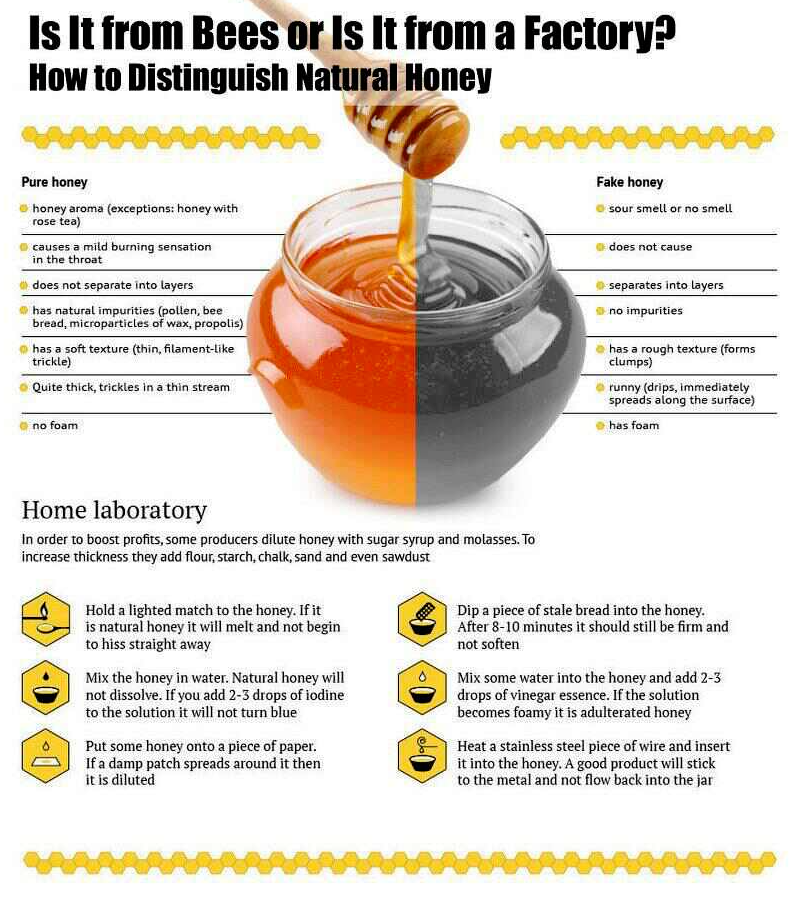Pakistan produces of some of the best varieties of natural honey in the world. The word 'natural' is being used deliberately to distinguish it from 'pure honey' manufactured by mixing a number of chemicals without anything to do with the honeybees. Many countries in the developed world allow the manufacture of 'pure honey', an appropriate example of which is Germany which produces 15,000 tonnes annually but exports 75,000 tonnes of honey each year.
This fine line between 'natural' and 'pure' honey and the lack of awareness surrounding it is posing grave health risks to the public health in a country where honey enjoy a legendary medicinal powers backed up by religion. Despite producing some 117 varieties of honey; some of which such as Sidrah (Beri or Ziziphus), Acacia and Orange are regarded the best in the world, the local markets are flooded with honey made from such harmful ingredients as sugar, alum, artificial colourings, spices such as cardamom, and dirt. The last is added to fool the people that the honey is pure as transparent honey is viewed as dubious.
The manufacture of artificial honey containing harmful ingredients without any check and balance by the relevant authorities and their flooded presence in markets across the country is posing grave health risks to millions of unaware consumers. What is being passed off as honey is not honey but a cheap equivalent which not only offers no benefits but also feared to cause serious medical problems to millions of unaware people.
Natural honey comprise 21 different varieties of sugar — the major being laevucose, dextrose, and glucose — 14 types of beneficial acids, and 181 other ingredients including gold, silver and zinc. The artificial equivalent manufactured by the unscrupulous elements does not contain any of these naturally healthy sugars, acids and ingredients and in fact is full of cheap and harmful substitutes — the primary being sugar used as cheap additive.
While Punjab and North West Frontier Province (NWFP) are the only two producers of natural honey, Mianwali and Sargodha cities in Punjab have emerged as the biggest producers of harmful artificial honey. Karachi, the single biggest consumer of honey in the country, has not remained immune to this unscrupulous activity, those still on a much smaller scale than Mianwali and Sargodha.

On the other hand, a reputable group of traditional medicines is also engaged in the manufacture of 'pure honey', and that too with the collaboration of a governmental agency responsible for scientific research. Of course, the manufacturer or the agency has never tried to educate the people that 'pure honey' is an unmatched equivalent of 'natural honey' in order not to jeopardise an already established market niche of the branded product. The same is the case of a better selling brand of 'pure honey' imported from Germany.
The artificially manufactured honey thus does not match the taste and medicinal properties of natural honey. The fact that every single of hundreds of traditional medicine manufacturers use 'pure honey' in their products pose further dangers to an already threatened public health.
What makes the situation even worse is the abssence of beekeeping knowledge and the general lack of public awareness towards honey. If the pollen is extracted from the natural honey the honey will never saturate, contrary to the popular but wrong public opinion that natural honey never saturates. In fact, all the big honey producing and marketing companies of the world use powerful machines to filter the pollen to stop the honey from saturating. The process does stop the saturation but it cuts the real efficacy of the honey.
These big companies are also forced to heat up the honey at 160 degree centigrade to make it flow as easy as water in the pipes of the automatic machines used to fill the bottles. This also makes the honey to loose its real medicinal efficay. Natural honey from which the pollen is extracted or which is heated to a temperature over 60 degree centigrade as well as artificial honey are not regarded at all as honey and yet the relevant authorities fail to check the all-prevalent abuse of the first and the second and the all-prevalent abuse of the third. The market is flooded with artificial honey labelled as 'pure' as well as natural honey which is either heated to a high temperature or from which pollen is extracted while unscrupulous elements keep on making loads of money.
So what can explain the increasing production of harmful artificial honey. Certainly price is not the reason as pure honey is not all that expensive. The only reason can be explained the lust for quick overnight profits as it costs just Rs 35 to manufacture three big bottles of honey which guarantees almost nine-fold returns.
While Punjab has a beekeeping institute, Sindh which houses the biggest honey market of Karachi is deprived not only of any such institute for the benefit of small scale entrepruneurs but also lacks testing facility to ensure the quality of honey. Though Pakistan Council for Scientific and Industrial Research does offer testing facility it is highly expensive. Certainly, the public health deserves better attention from the relevant authorities.
Source: Aslam, SM (2001) "Massive Supply of Impure Honey" Pakistan Economist.


2 comments
A very informative article. Thanks to the management in keeping the general public aware of the facts.
Excellent article and knowledge sharing. The question is how one may believe that the honey marketed by your company is also not fake? Unfortunately the national multinational and food companies system has gone so much corrupt that it is very difficult to find claims of sellers like you. Also massive as!es of your company in honey segment also questions that natural honey quantity sold out passes wild natural honey yields for a particular type or region. Means the honey may be natural but definitely not wild I.e. produced from bees from bee houses farming.
How can be sure what is reality!!!!